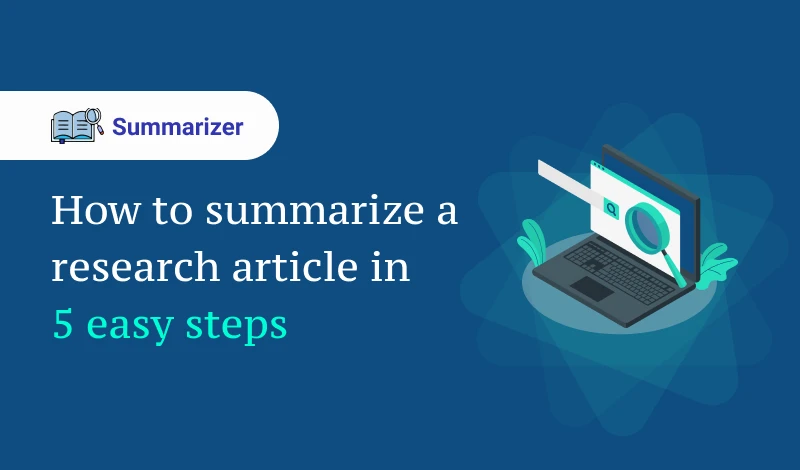
You spent hours reading a research article, but now you have to summarize it for your professor.
If this is the first time you have had to summarize an academic article, then you are probably feeling overwhelmed by the task.
It seems like there are so many steps and that each step takes forever to complete.
Summarizing a research paper does not have to be hard or take longer if you use our 5-step summary guide below.
Our guide will walk through every aspect of summarizing an academic paper in simple terms that even a beginner can understand.
Just follow these easy steps and your summary will be ready before you know it.
The following are the easy steps to summarize a research paper;
In order to read an article and be able to summarize it, you need to first understand the vocabulary that is incorporated.
For example "the study found" means they did research on a topic or subject. Sometimes there are graphs in articles that might help break down specific parts of this report.
For now, we will focus only on summaries without any visuals as these can be more difficult at times when trying to get into too many details since each word has its own meaning in reference to other words like synonyms.
It is no secret that reading a long article can be difficult and sometimes feel like it takes up way too much time.
Luckily, there are easy ways to ensure you get through the whole thing without being lost or dazed for hours on end.
The first three sentences of an article allow you to deal with the article one paragraph at a time instead of trying to swallow it whole by jumping right in from the beginning.
Which may not always work out well if your attention span is not what it should be.
You do not even have to do multiple readings just make sure that each of your paragraphs summary's accuracy so as not find yourself back where you started because something was missed earlier when skimming over this passage.
In order to make a good summary of any article, one must keep in mind the following:
1) summarize only what is necessary for understanding and
2) omit all unnecessary parts. You should write your summary with that purpose in mind as well.
A passage that summarizes an article in detail is not always necessary if its only purpose is for posterity or reference. Readers will either have access to the original text themselves or can find it with relative ease online.
A well-organized outline of each section's contents may do as much work without occupying space unnecessarily on paper or screens.
To summarize any article, one must list its strengths and weaknesses.
If an article is well-written but has a few spelling errors then it may be considered to have good writing with minor mistakes in grammar or style.
However, if the content of the article is unclear as not enough detail was provided to answer questions about what they are trying to say.
This could indicate that there are major structural issues within the text itself that need improvement before being published again for public consumption.
How do you summarize an article in a way to engage your readers? A good summary provides the reader with their opinion on whether or not this is something they care about and why.
They also need to provide clear reasons for how it might be either important, irrelevant, false information etc.
It is important to have a good summary of any article because it can provide the reader with an idea on what they should be reading.
The opinion that you would give for the topic, however, is focused mainly around whether or not their opinions are well-founded in research and facts which cannot always happen.
If you are looking to summarize a research article for your own personal use, or if you have an assignment and need help with figuring out how to summarize the article quickly, you can also use summarizer.org to complete this task within seconds.
But if you're doing it by yourself, here are 5 easy steps that will get you started on summarizing any study in no time.
What other strategies do you use when reading an academic paper? Let us know by commenting below.